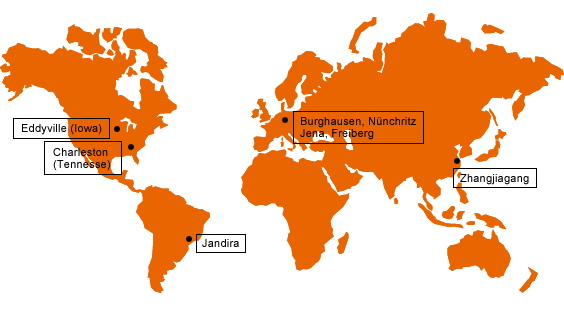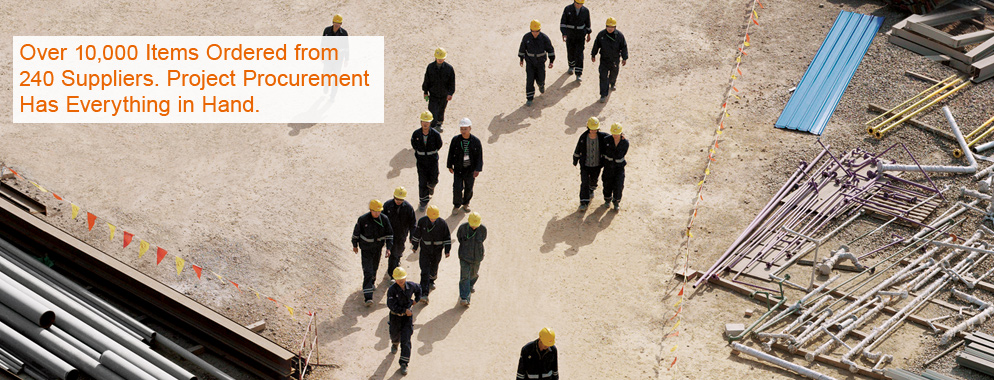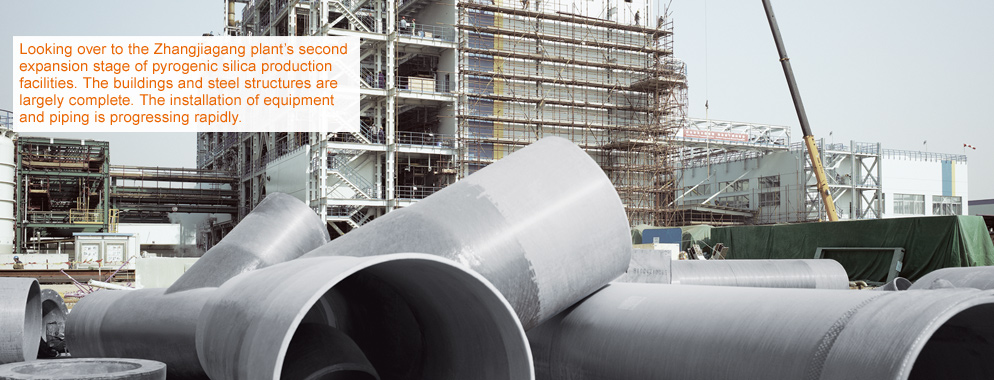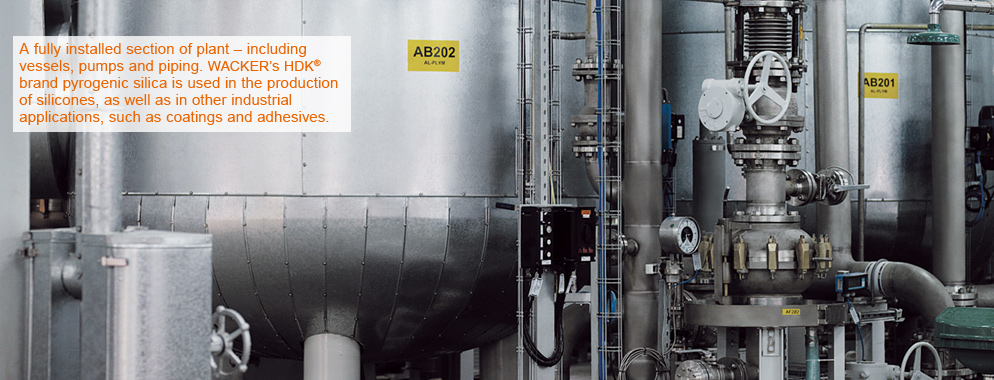
Bernhard Kollmuss heads Project Procurement at WACKER. Joining WACKER 21 years ago, the chemical engineer has since gathered extensive experience from his involvement in large-scale projects around the globe. A family man, he loves to go sailing or practice his culinary skills in his leisure time.
Project Procurement
Vast numbers of gray, beige and yellow pipes of different lengths and curvatures lie on the ground. Beside them are boxes in different shades of brown and, a few meters further on, the outlines of large machine parts can be distinguished under green tarpaulins. From the air, the scene looks like a giant’s model kit. In reality, it’s a stockpile of parts for the second expansion stage of production facilities at Zhangjiagang, China. Supplying pyrogenic silicas (trademark: HDK®) for silicones and other products, the facilities are located on one of the world’s largest and most modern, integrated silicone sites, built jointly by WACKER and its US partner, Dow Corning.
Planning Intensively but Staying Flexible
The fact that nothing was missing from the vast construction kit was partly thanks to Stefan Bahn (45) of WACKER’s Project Procurement unit, set up in 2008. He and his team ensured that every single piece was delivered to the huge industrial park at the right time, to the proper specification and in the desired quality. Bahn was involved in the construction of the HDK® production facilities in China for two years – from the very first feasibility studies down to the final delivery. The scale of the task of building the facilities, not far from the Yangtze river, is made clear by some of the data: WACKER placed some 300 scheduled and 300 follow-up or amended orders (totaling over 10,000 items) with 240 different companies. “Project Procurement is like a living thing,” says the mechanical engineer. “Though we plan ahead wherever possible, we have to remain highly flexible to respond to project demands.”
Last-Minute Decisions
“Early planning and prompt action” aptly describes Project Procurement. “Our unit was set up to supplement the 18 category management teams, each of which handles issues for a specific WACKER product category,” explains Bernhard Kollmuss, who heads Project Procurement from his base in Burghausen and is Stefan Bahn’s supervisor. “We take on all the cross-divisional procurement tasks for projects costing over 100 million euros or those that are implemented abroad.”
The decision to supplement procurement processes and, above all, make them more project-specific was mainly taken because WACKER has built a comparatively large number of new plants both in Germany and abroad in recent years. “Our capital investments represent 20 to 25 percent of Group sales. With such vast sums involved, we can save a great deal of money and also coordinate complex projects more effectively,” says Kollmuss, a process engineer. His procurement team, drawn from various disciplines and offering a wealth of international experience, not only knows the products inside out, but also has an excellent understanding of project management. This closeness to any given project is essential to shorten the time to market – the period between deciding to build a plant and bringing it on stream. “As the economic crisis showed, we need the flexibility to be able to delay decisions until a late stage during periods of high volatility,” says the father of two, who gained substantial project experience working for WACKER at Siltronic AG in Singapore.
Finding and Using Local Expertise
Kollmuss’ project buyers work either independently, or in small groups with purchasers from Germany. At the same time, they head local purchasing teams. In China, for example, the local team has around 20 employees – without them many a decision would have been much harder. “Our Chinese colleagues have enormous expertise, which we very much appreciate. It’s so important to know which subcontractors are available and to assess them – especially in China, since markets there function differently from ours,” says Kollmuss. The differences in mentality are huge, and collaboration with local companies is largely untested. Take the following comparison: whereas, in Germany, large plants are delivered in pre-assembled sections, Chinese companies tend to assemble everything on site from the various parts. “Communication, too, is different. A lot more renegotiating goes on,” says Kollmuss. Delivery schedules are not as reliable, he adds, and our buyers have to visit subcontractors more frequently, taking engineers along to ensure that the delivered product will be on-spec.
Protecting Intellectual Property Abroad
Project Procurement is also involved when subcontractors plan the construction of WACKER facilities. “While we leave the entire construction to our experienced partners, we still need to protect our intellectual property on foreign markets. That’s why we see to the critical parts ourselves – for example, reactors, compressors and process-control equipment.” All this is sourced in Europe, quite often in Germany. Although an order sheet may only contain a few of these items, they can make up an enormous 25 percent of the procurement volume, depending on the technology involved.
The experience WACKER has gained in China, for example, will pay off in future projects. The next big challenge is already in sight: Bernhard Kollmuss and his team are needed in the USA, he explains. “WACKER is building its first polysilicon production plant outside Germany on a greenfield site in Tennessee. It’s a marvelous project and we’re all really excited about it.”
Characteristics
Investments on the rise worldwide: Project Procurement is becoming ever more important for WACKER.

High Order Values
Although fewer individual orders are triggered by Project Procurement than by Technical Procurement, the former’s have a much higher value.
Project Procurement Worldwide

Project Procurement operates worldwide. WACKER invests constantly in new plant. In recent years, investments in property, plant and equipment have risen considerably in relation to sales.
Project Pipeline at WACKER in 2010 (Number)

There are several stages to a new project. It starts with the initial feasibility studies, passes through the construction phase, and finishes at the follow-up stage. The adjacent chart shows the number of large-scale WACKER projects and their respective implementation stages.






